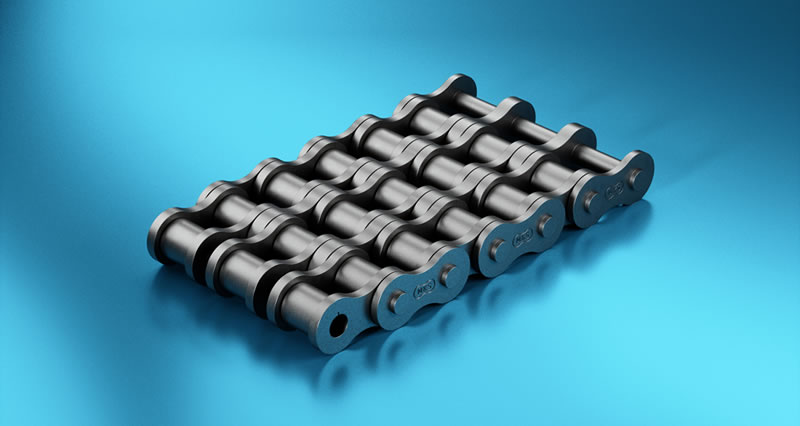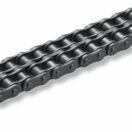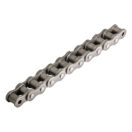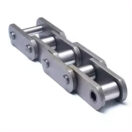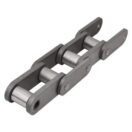Conveyor chain, which is frequently used in sectors such as automotive, food, furniture, textile, iron and steel, recycling, and storage, plays a very important role on transport systems, which helps to reduce the workload of employees.
Choosing the appropriate selection for the sector and material among the conveyor chain types is of great importance in terms of the smooth operation of the process and the acceleration of the work and production.
Standard Conveyor Chains
These chains, which are accepted as a worldwide standard; are produced in accordance with ISO (International Organization for Standardization), DIN (Deutsches Institut für Normung), BSI (British Standard Institute) and/or ANSI (The American National Standards Institute). Standard chain is preferred by different sectors due to its robustness and quality.
A chain in standard conveyor chains consists of inner and outer links. The inner link consists of two inner plates into which two bushings are pressed, and two rollers that rotate on the bushings. The outer link consists of two outer plates and two bearing pins. By adding the outer links, the inner links are connected to form a chain.
The biggest advantage of standard chains; It is produced from acid resistant and stainless quality steel, and it is resistant to corrosion thanks to its propulsion and antimagnetic properties. The leading sectors in which these chains are used are the mechanical engineering industry, transportation, logistics, food, packaging, agricultural machinery, construction, printing, textile and automotive.
High Strength Conveyor Chains
This conveyor chain, which is made of high-strength chains (For example, Galle Chain and Rotary Chain), which is more resistant to deformation, with suitable strength to hold heavy loads and reduce the breaking load; It is used in facilities containing heavy products such as mining, iron and steel, automotive, heavy industry. The biggest advantages of these chains, which are specially designed and produced for heavy loads, are that they are very durable and long-lasting. In addition, custom-made chains are also made using high-strength conveyor chains. While producing these custom-made chains, parameters such as the product to be transported, weight, working speed, transport distance are kept in the foreground.
Multiple Strand Conveyor Chains
This conveyor chain, which can be used in multiple rows in transfer conveyors, is formed by connecting double, triple or more chains. Multiple Stand conveyor chains that offer advantages in parts handling and assembly lines; Increase the efficiency of production processes and workforce use. Roller chains, accumulation chains, Rotary chains are among the types of multiple strand conveyors.
Chain Selection and Maintenance
It is important for businesses to make the right choice among standard, high-strength, plastic, straight and multiple strand chains.
While choosing from the conveyor chain types, the characteristics of the enterprises along with the products are kept in the foreground. For example, chains are manufactured and maintained using special materials for facilities with wet environments. The maintenance of chains depends on the chain type; It is necessary to lubricate at specified intervals (in some cases, accompanied by an expert), clean with an approved and suitable cleaner, and check whether it is tight or correctly accommodated.

